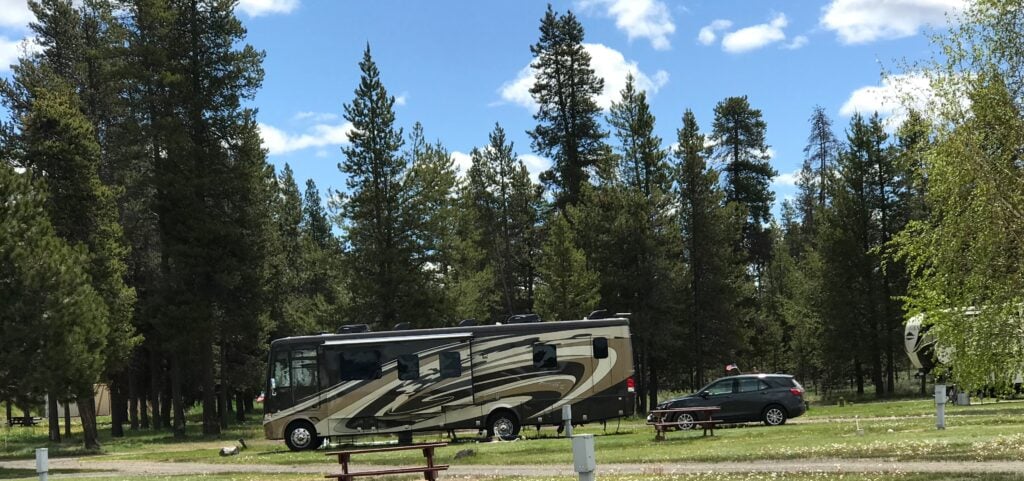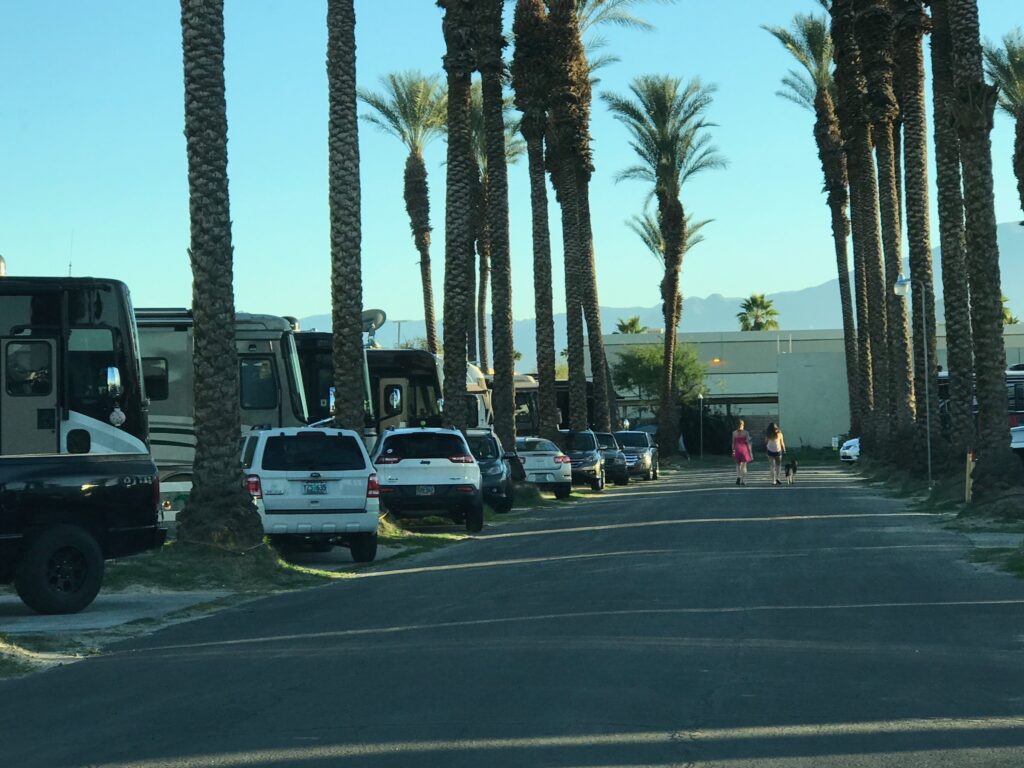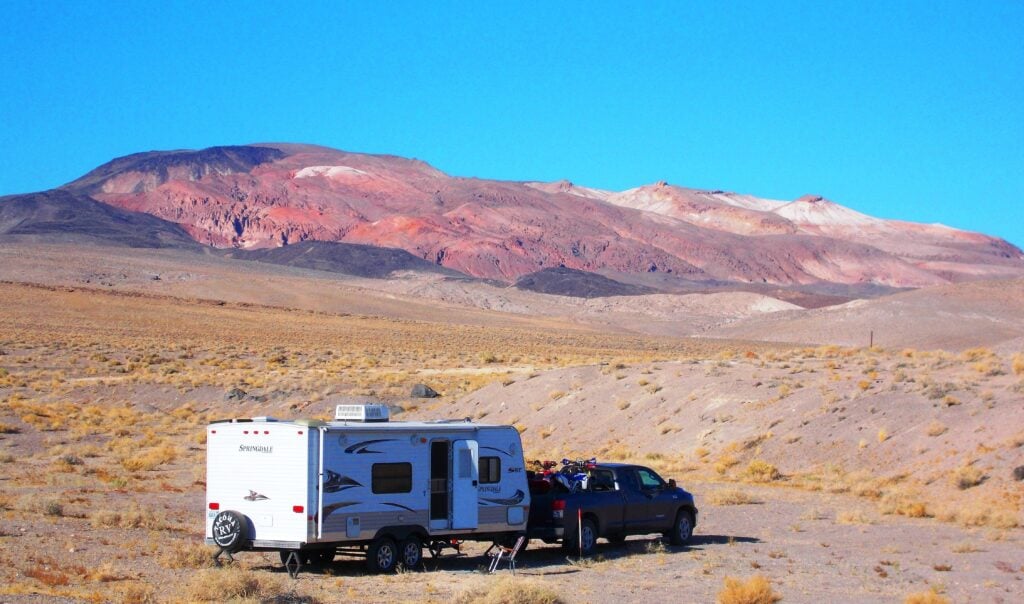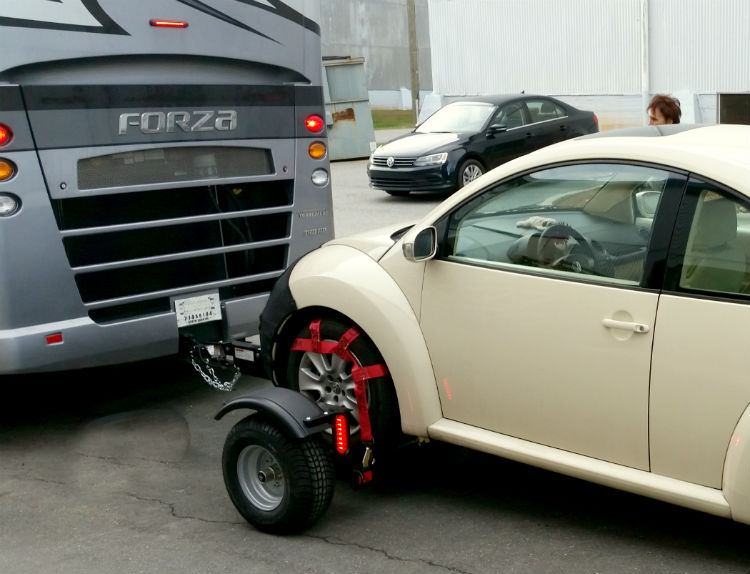
RV Towing: Important Things To Consider
When you’re getting ready to buy a toad (a second vehicle towed flat behind an RV, also called a dinghy) you need to do some careful research before you sign on the dotted line. Don’t just believe what the salesperson is telling you about the towability of any vehicle and don’t assume because you’ve seen a particular make or model being towed by others, that your particular choice is going to be towable.
Flat towing
When I’m talking about towable, I’m referring to flat towing, where all four wheels are on the ground. There are, of course, other ways to take a second vehicle with you on RV trips. Additionally, only Class A, B, and C RVs are in need of a toad. Trailers and fifth-wheel RVs have their separate vehicle in front of their RV as the towing vehicle, so this article is for Class A, B, and C owners or prospective owners.
Alternatives to flat towing
Instead of flat towing, you could put a car or truck on a trailer, put the front wheels on a tow dolly, put a small vehicle in the back of a tow hauler, or even less desirable in my opinion, have a second driver bring the car or truck along without attaching it to the coach at all.
I’ll get to the advantages and disadvantages of these various methods later, but for this discussion, I’m specifically talking about choosing the right vehicle for flat towing (with all 4 wheels touching the ground) behind a Class A, B, or C RV.
Choosing the right tow vehicle requires research
When you’re choosing the right tow vehicle, you want to avoid the mistake of generalizing towability based on brand or model. Don’t buy your toad based on a generalization because you could discover after the fact that the particular vehicle you purchased is the one model in that line that is not towable.
Even in a brand like Jeep, which makes many different towable models, there are subtle differences within each line, that will make the vehicle compatible with towing or not. It could be the difference between the 4-liter automatic and the 3.2-liter automatic.
In a different model, the standard transmission is towable but the automatic transmission is not. To make this even more confusing a particular make and model might be towable one year but not the next, and salespeople can get confused by all these subtle nuances, just like buyers.
According to Jim Harmer in this Camper Report article,
“For couples who are just beginning their journey, to picking the proper car for them on their RV trip, there should are at least four main qualifications they should consider in the car first.
- Weight
- Drive System
- Transmission
- Price
Each qualification will help couples understand what kind of car works better as a towing vehicle and why. The qualifications will play a big role in deciding what car works best for each couple.”

Class A motorhomes with their toads lined up out front. Photo by P Dent
Best method when choosing the right tow vehicle
The best way to confirm that any specific vehicle is towable is to reference the towing instructions in the owner’s manual of that vehicle. The instructions on how to tow will be very specific and the instructions need to be followed exactly.
For example, it may say to remove fuse #20, or idle the vehicle for 5 minutes before and after towing, or stop every 3 hours and start your engine, or put the car in park, start the engine, shift to neutral, take the car out of park, then with your foot off the brake hit the stop/start button…, etc. These instructions are important and cannot be ignored without consequences.
Follow tow instructions exactly or pay the price
Let me give you an example. While camped in Oregon we met a couple from Tennessee that had flat towed a truck behind their 40” diesel motorhome all the way from Tennessee but had forgotten a crucial step in the towing procedure. This extra procedural step was crucial because it allowed the front axle of the towed vehicle to turn freely with the flow of the motorhome’s movement.
As a result of this oversight, the tread on both of the front wheels of their tow vehicle was completely gone. They were new tires when they left Tennessee, but by the time they arrived in Oregon the tires were ruined. For their particular truck model, they discovered that they needed to disconnect the battery before towing, a step they had overlooked.
Choosing the right tow vehicle may not be worth the trouble
You might think that this is just too much of a headache. You decide that choosing the right tow vehicle is too risky so you’ll go with a different plan. Perhaps you’re reconsidering the need to even have a second vehicle.
If you’re just going camping for few days at a time that may be your best choice because it’s easier to drive and park a motorhome without the second vehicle. But for longer trips or for full-time RVers, there is usually a need to buy a toad, so you can leave your RV set-up but still go exploring, run to the store for supplies, visit a museum, go fishing, or take advantage of the fullness of the camping experience beyond your immediate campsite. As mentioned earlier, there are many different RVing options other than Class A, B, or C motorhomes for which you do not need to buy a toad.
Towing an RV vs being towed by an RV
You may decide to go with a totally different set-up, like a truck and travel trailer, tent trailer, pop-up, or fifth wheel. In all of those camping options, you don’t need a dinghy because your truck or towing vehicle is available whenever you need it, and I believe this is one of the main advantages of trailers and fifth wheels.
One other option mentioned above is putting a small vehicle like a Fiat 500, Mitsubishi Mirage, Mini Cooper, or motorcycle inside the tow hauler area of a motorhome. Admittedly, most toy haulers are fifth wheels, but there are a few Class A motorhomes like the 40’ Newmar Canyon Star that come with toy hauler space in the back.
On the other hand, if your need for a second vehicle would be satisfied with a motorcycle, then adding a motorcycle rack to the back of any motorhome might satisfy the need.
Trailers and tow dollies
I also mentioned the use of tow trailers or tow dollies to transport a second vehicle behind a motorhome. The huge advantage of either of these two methods is that you can take ANY second vehicle with you that suits you. Perhaps you just can’t part with your ‘65 Mustang, or Bentley, or Rolls Royce (or more like it’s your Chrysler Town and Country van) but these vehicles simply can’t be towed.
In that case, you can take them with you and enjoy them wherever you’re camping, if you use either a trailer (where all 4 wheels are on the trailer) or a tow dolly, where two wheels are on the ground and two are on the dolly. Again, check the towing specs for any particular vehicle, because some cannot even be towed with two wheels on the ground.
The downside of the alternatives
However, the option of using a trailer or tow dolly to transport a second vehicle also creates some unique challenges that differ from dinghy towing. A trailer takes up a lot of extra space and your campsite needs to be oversized to accommodate both the coach and trailer.
A dolly is smaller and can be partially stored under the back of the coach when camping. Our tow dolly weighed 600 pounds so moving it on flat surfaces was fine, but it was challenging to drag it manually up or down any slop. Getting our car on and off of the dolly took much longer than setting up our dinghy. Additionally, a dolly setup must be done right at the campsite, which means we were blocking the interior campground thoroughfares.
This added pressure of blocking other campers added a lot of stress to our set-up and removal process. With a dingy, we can take both the coach and tow vehicle to an out of the way spot to hook it up, and it takes only a fraction of the time of setting up a car on a tow dolly or trailer.
Additionally, a car or truck on a trailer or dolly must be secured with chains or straps and those tie-downs need to be checked for tightness after traveling for a few miles. We learned the hard way that tie-down straps loosen up after the car settles during the first few miles of driving.
When towing either a trailer or tow dolly, the turning circumference of your entire rig is much wider and that can be difficult to manage in parking lots, gas stations, and campgrounds. Remember, you can’t back up your motorhome if it’s towing a tow dolly, just like you can’t back up a motorhome towing a dinghy, so you need to plan your exit before you get stuck in a place from which there’s no way out but to back up.
Our personal experience with RV towing
Over the past 20 years, we have towed five different dinghies and a van on a tow dolly. I much prefer dinghy towing, but this is a hotly debated issue and some people feel that the dolly or trailer is the only way to bring a second vehicle on a camping trip.
Additionally, there are a small number of campers (typically full-timers) who opt to bring their second vehicle by having a second driver following the coach in the other vehicle. I personally would not like this option because I think half the fun is “getting there” and I want to enjoy that experience with my traveling partner.
But everyone has their own likes, dislikes, and personal needs. For example, Youtubers Mountain Modern Life share why they don’t tow a vehicle behind their RV in this video:
My only reason for writing this is not to make a case for any particular methodology, but just to warn anyone who is preparing to buy a toad to do their due diligence, and make sure the vehicle they want to buy will meet their needs to be towed flat.
For more tips on choosing a tow vehicle, check out this article on the Best Toad Vehicles for Couples Traveling in RVs.
The post RV Towing: Important Things To Consider appeared first on RV LIFE.



